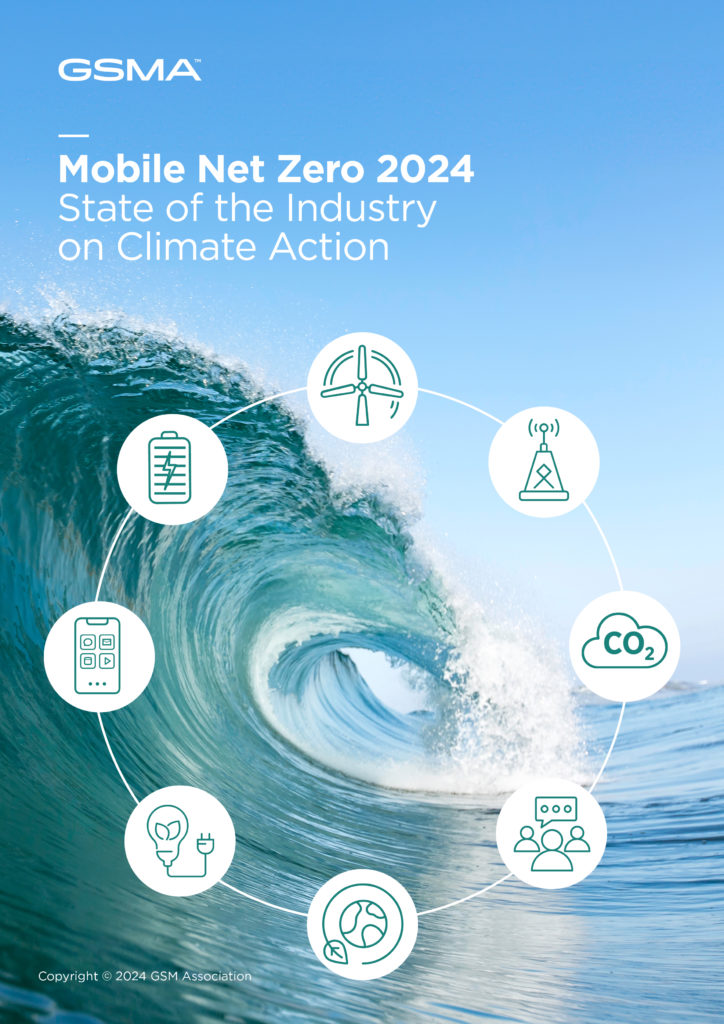reducing carbon emissions
Highlights of GSMA study: Mobile Net Zero 2024, State of the Industry on Climate Action
Reducing carbon emissions has been a top priority for global network operators and equipment vendors for the past few years. Many have published net zero targets and use every opportunity to include their sustainability agenda into their public announcements. In 2019, the mobile industry set a goal to reach net zero by 2050, becoming one of the first sectors in the world to set such an ambitious target.
A new GSMA study titled Mobile Net Zero 2024, State of the Industry on Climate Action, the fourth of its kind, provides a glimpse of how they are progressing.

Over the past year, eight network operators submitted new near-term targets to the Science Based Targets Initiative (SBTi), bringing the total to 70 operators and
representing nearly half of global mobile connections. Fifty-three operators have also
committed to net zero targets.
GSMA found that European telcos are leading the way forward. Operational emissions in Europe fell by half in the 2019-2022 period, with some telcos getting a special mention for exceeding that 50% level; Tele2, Telefónica, Telenor, Telia and Vodafone all achieved deeper reductions.
North America also performed well, with operational emissions falling by around 30% over the period, as did Latin America, where TIM Brasil and Telefonica got a shout-out for driving a 22% reduction. And Turkcell was credited as the main orchestrator of a decline of around a fifth in emissions in the Middle East and North Africa (MENA).
However, emissions from operators in Greater China rose by 3% and those from the Asia-Pacific by 10%. While those numbers are not huge, the relative sizes of those markets mean there is a significant impact on the overall figures.
“While this appears challenging, recent progress shows this is within reach,” the report reads. Yet the target reduction rate for operational emissions was exceeded for the past three years in Europe (21% per year), North America (11%), Latin America (8%) and MENA (8%).
Three-quarters of the mobile industry’s carbon emission come from its value chain (Scope 3), highlighting the importance of engaging supply chains and customers. More than 90% of Scope 3 emissions came from just five Scope 3 categories: 1) Purchased goods and services; 2) Capital goods; 3) Fuel- and energy-related activities; 11) Use of sold products; and 15) Investments.
GSA says there is an urgent need for improved data and further analysis to better understand Scope 3 trends.
“The evidence shows that the mobile industry’s commitment to net zero by 2050 is paying off. Despite surging demand for connectivity and data, the global carbon emissions of operators continued to fall,” said John Giusti, Chief Regulatory Officer at the GSMA.
The number of mobile connections globally rose by 7% between 2019 and 2022, and Internet traffic more than doubled, the GSMA said. As such, the industry’s carbon reductions were mainly driven by energy efficiency and the use of renewable energy.
“Although we see the strongest early lead from Europe in the race to net zero, and encouraging progress in the Americas and MENA, this is a race that everybody needs to win – or else we all lose,” Giusti said, assiduously avoiding naming those trailing markets.
References:
Mobile Net Zero 2024: State of the Industry on Climate Action
NTT DOCOMO & SK Telecom Release White Papers on Energy Efficient 5G Mobile Networks and 6G Requirements
NGMN Alliance: Green benchmark for mobile networks
Huawei Execs: ICT Industry Initiatives for 5G and Green 5G Networks for a Low-Carbon Future


